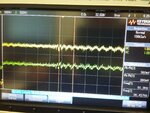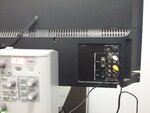diba88
Newbie level 5
I am using a composite video to usb converter. From usb i have D+ and D- differential signal coming out. I manually probed the white (D-) and green(D+) wires from my usb cable (I had to slice the wire) to visualize signal outputs using scope.
Now I want to modulate LED light to transmit this digital usb signal (D+/D-) to the receiver. At Receiver end is a PD to decode light to voltage. A USB to composite video converter will be used to display the video at the receiver end. I plan to use arduino UNO board for processing. How do I establish the half duplex system (any code)? Please suggest on voltage level for D+/D-..
Now I want to modulate LED light to transmit this digital usb signal (D+/D-) to the receiver. At Receiver end is a PD to decode light to voltage. A USB to composite video converter will be used to display the video at the receiver end. I plan to use arduino UNO board for processing. How do I establish the half duplex system (any code)? Please suggest on voltage level for D+/D-..


